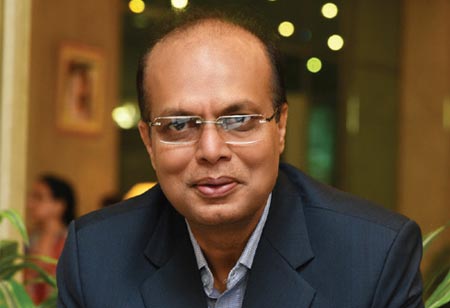
The Covid-19 pandemic had a lasting impact on the textile industry, while from a global perspective, it accounted for $594.61billion in 2020, in 2021 it is expected to increase at a CAGR of 10.1 percent, i.e., accounting for $654.57 billion.
The growth is mainly because of textile companies rearranging operations and recovering from the Covid-19 impact, which earlier led to restrictive containment measures which included social distancing, remote working, and closure of commercial activities which resulted in operational challenges. The global textile market is expected to reach $821.87 billion in 2025 at a CAGR of 6 percent.
In 2020, Asia Pacific accounted for 51 percent of the global textile market, while Western Europe turned out to be the second largest, accounting for 17 percent.
Being a major contributor to the Asia Pacific region, the Indian Textile Industry is one of the country’s largest and richest industries, forming an integral part of the modern society.Ithas evolved to become self-reliant and independent. Contributing nearly 2.3 percent to the GDP of India, and 13 percent to the export earnings, the Textile Industry is the second largest industry generating employment in the country.
The industry is known for being diverse, with hand-spun and hand-woven sectors at one hand and capital-intensive mills sector on the other. Decentralised power looms/ hosiery and the knitting sector form the largest component in the textiles sector. The industry houses an equitable mix of organised and unorganised markets.
India’s textiles industry has the capacity to manufacture a wide range of products suitable to the both domestic and international markets.
The advent of textile industry first saw human hands as the main tool, supplemented by ancillary tools which have been discovered over years through excavations, yielding artefacts made of stone, bone etc. It was during the colonial rule that the hand technology took second place, and the textile industry was introduced to a mechanised way of working. This was the period of Industrial Revolution.
With mechanisation taking centre stage, it had a lasting impact. It adversely affected hand technology as it could no longer compete with speed, uniformity of quality and lower prices. The Industrial revolution commercially marginalised weaving and dyeing technologies using natural fibre such as cotton, through which India established a prominent place in the world trade.
In order for the textile industry to continuously grow, there was a constant need to evolve and innovate and introduce newer products
Over the years, the textile industry has grown exponentially and the manufacturing companies have progressed in terms of employing skilled manpower, upgrading the machinery and equipment, use of latest technology and streamlining processes.
Processes and machinery have grown in leaps and bounds, with the textile industry today encompassing numerous processes that add value to the fiber, for instance the yarn making process through garment stitching, fabric embossing, and composite production.
Since textile fiber is the basic building unit for any textile product, the textile manufacturing can be identified as conventional textile manufacturing or technical textiles.
With the production capacity getting a boost, employment opportunities too were on the rise. With the demand from the global economy, the Indian textile industry became a force to reckon with world-over.
The Textile industry grappled with the Covid-19 situation by delving into research and development and innovating with anti-viral fabrics, the need of the hour. Industry pioneers worked on last mile consumer education by sharing a lot of collateral to end retailers, uplifted sentiments of the textile industry by conducting workshops on how it was possible to recover losses and presented a checklist to them for their stores and educating the end customer. Innovation and adoption is the key to growth in the new normal.
Well, in order to identify such a category a lot of Research & Development (R&D) goes into play. Investment in R&D at this point in time is extremely essential. Textile technologists spend years on research understanding the structural nuances and mechanics of fibres, yarns and fabrics to have their ‘eureka’ moment.
With the changing times, there is a significant need to evolve all processing stages in manufacturing right from fiber production to finished fabric. Everything across the assembly chain has been experiencing enhancement in process control and evaluation. This includes textile fiber production and processing from blow room, carding, drawing, and combing; and fabric production includes knitted, woven, non-woven, and subsequent coloration, finishing and even apparel manufacturing.
Now increased technology has enabled shop floor to function more efficiently as well as more streamlined communication between team and inter department collaboration. So, not solely a machine efficiency boost, but a human one as well. And thereby increasing productivity overall.
In order for the textile industry to continuously grow, there was a constant need to evolve and innovate and introduce newer products. From a product perspective, performance fabrics have been the way to go. These fabrics are known for their utilitarian properties such as Sweat Resistance, Waterproof, Anti-bacterial, anti-viral, antifungal, Stretch, etc.
Apart from which, a constant lookout for the latest machinery is imperative to make processes better and faster across all departments such as spinning, dyeing, weaving, quality control, inspection, finishing, warehousing.
Unified communications and technology help manpower across the assembly line to stay prompt on schedule and communicate with each other real time to mitigate any confusions and strive to be error free.
Post the Covid-19 pandemic, 2021 shines a ray of hope for the textile industries to ramp up their production, innovate and incorporate newer manufacturing technologies, and make the most of the year with innovative products, processes and machinery.
We use cookies to ensure you get the best experience on our website. Read more...